Bishop Robert Peter Deeley, 67, will be installed Feb. 14 as the 12th Bishop of the Diocese of Portland. The Installation Mass will be held at the Cathedral of the Immaculate Conception in Portland.
-

-
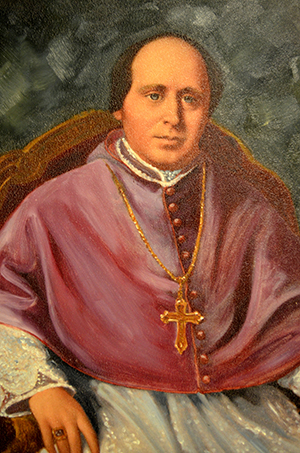
Bishop David William Bacon (1855–1874)
T
he first bishop of Portland, David W. Bacon, was born in Brooklyn, N.Y., in 1815. He was selected to lead the Diocese of Portland when it was established by Pope Pius IX on July 29, 1853. He was consecrated a bishop on April 22, 1855, in St. Patrick’s Cathedral in New York and, six weeks later, was installed as Bishop of Portland in Saint Dominic Church, which served as pro-cathedral. Bishop Bacon chose as his motto "Courage and Hope," and his episcopacy was marked by both. In his 20 years as bishop, the diocese went from six priests and eight churches to 52 priests and 58 parishes. Calvary Cemetery in South Portland also opened during this time. In 1860’s, Sisters of Mercy arrived in Bangor and Sisters of the Congregation of Notre Dame in Portland, both at Bishop Bacon’s request. One of Bishop Bacon’s undertakings was construction of the Cathedral of the Immaculate Conception in Portland. Bishop Bacon died in 1874 at age 59. He was buried in the Cathedral crypt, which he had prepared for himself.
-
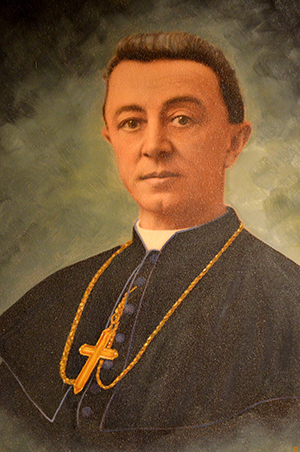
Bishop James Augustine Healy (1875–1900)
J
ames Augustine Healy was consecrated as the second Bishop of the Diocese of Portland on June 2, 1875, at the Cathedral of the Immaculate Conception, Portland. The son of an Irish immigrant and a former mulatto slave, he was the first black bishop ordained in the United States. Bishop Healy was born in Mason, Ga., in 1830, but because that state did not recognize his parents’ mixed-race marriage, the family moved to New England. Bishop Healy attended Holy Cross College in Worcester, Mass., and did his seminary studies in Montreal and in Paris, France, where he was ordained a priest in 1854. Prior to arriving in Maine, he was pastor of St. James Church, the largest Catholic congregation in Boston. During his 25 years as bishop, the Catholic population in Maine more than doubled. Bishop Healy remained bishop until his death on August 5, 1900. He is buried at Calvary Cemetery.
-
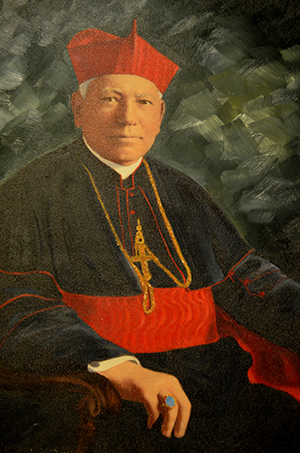
Bishop William Henry O'Connell 1901–1906)
B
orn in Lowell, Mass., in 1859, William Henry O’Connell was installed as the third Bishop of Portland on July 4, 1901. He had previously served for a decade as a priest in the Archdiocese of Boston and then as rector of the Pontifical North American College in Rome. Bishop O’Connell was known for his charm, intellect and patriotism but his requirement that parishes submit annual reports caused consternation among some priests. Bishop O’Connell counted President Theodore Roosevelt among his friends. He also retained some of his Rome connections and, during his tenure as Bishop of Portland, was named papal envoy to Japan. After five years in the Portland Diocese, Bishop O’Connell was named Coadjutor Archbishop of Boston, and he eventually became Archbishop of Boston. He was named a cardinal in 1911 and died in 1944.
-
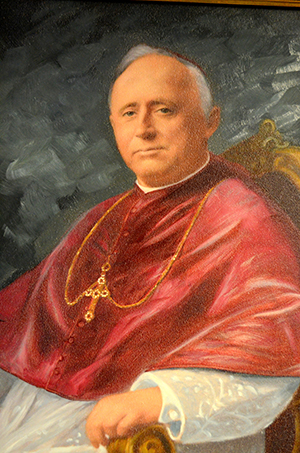
Bishop Louis Sebastian Walsh (1906–1924)
B
orn in Salem, Mass., in 1858, Louis Sebastian Walsh was consecrated as the fourth Bishop of the Portland on Oct. 18, 1906. Before arriving in Maine, he served as superintendent of schools for the Archdiocese of Boston. So dedicated was he to education that during his time as bishop, the number of children enrolled in Catholic schools grew from 9,000 to more than 20,000. Twenty-one new schools were founded including Catholic Institute High School, which would later be renamed Cheverus High School, and Cathedral High School, which would later merge with St. Joseph Academy to become Catherine McAuley High School. The Sisters of Mercy also opened Saint Joseph’s College, originally located in Portland. Forty-four new parishes were established under Bishop Walsh’s leadership. In 1918, Bishop Walsh turned to the Sisters of Mercy to help care for the sick during the flu pandemic, and Queen’s Hospital, which would later become Mercy Hospital, opened. Bishop Walsh was also involved in the development of the National Catholic Welfare Conference, which sought to bring about social change in the country. He remained Bishop of Portland until his death on May 12, 1924.
-
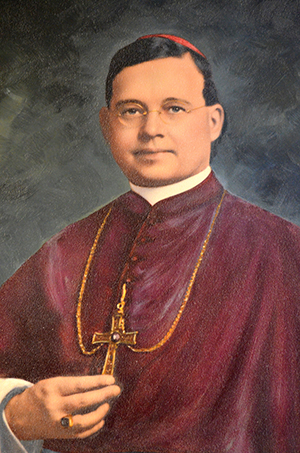
Bishop John Gregory Murray (1925–1931)
B
orn in Waterbury, Conn., in February 1877, John Gregory Murray was consecrated as the fifth Bishop of Portland on Oct. 12, 1925. He attended Holy Cross College in Worcester and then the American College of Louvain in Belgium, where he was ordained a priest in 1900. Before becoming Bishop of Portland, Bishop Murray was the first Auxiliary Bishop of the Diocese of Hartford (1920-1925), making him the first Bishop of Portland to have prior experience as a bishop. Like his predecessors, Bishop Murray was committed to increasing Catholic education. Within six years, at least 15 schools had opened, along with 15 churches. Unfortunately, Bishop Murray’s time in Portland also coincided with the Great Depression. Construction projects, along with the cost of operating hospitals and orphanages, left the diocese millions in debt as parishioners’ financial contributions fell. The bishop was forced to take out mortgages to pay the bills, and when he was appointed Archbishop of Saint Paul, Minn., in 1931, he left the diocese millions of dollars in debt.
-
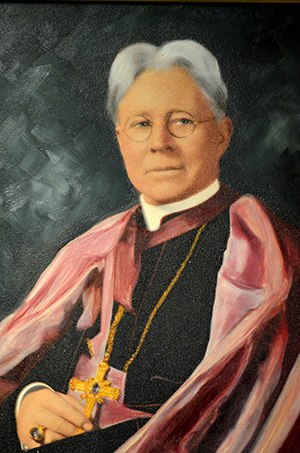
Bishop Joseph Edward McCarthy (1932–1955)
B
orn in Waterbury, Conn., in 1876, Joseph Edward McCarthy was consecrated as the sixth Bishop of Portland on Aug. 24, 1932. Prior to arriving in Maine, he was vice rector of St. Thomas Seminary in the Diocese of Hartford. Among the challenges facing Bishop McCarthy was the large debt left by his predecessor, a result of the Great Depression. A plan was drawn up to issue bonds, with the property of the diocese as its basis, to stabilize the financial situation. Bishop McCarthy’s tenure saw the arrival of the diocese’s first auxiliary bishop, Daniel Joseph Feeney. Bishop McCarthy also guided the diocese through the difficulties of World War II. By 1948, the administration of the diocese passed to Bishop Feeney due to Bishop McCarthy’s declining health. Bishop McCarthy died on Sept. 8, 1955.
-
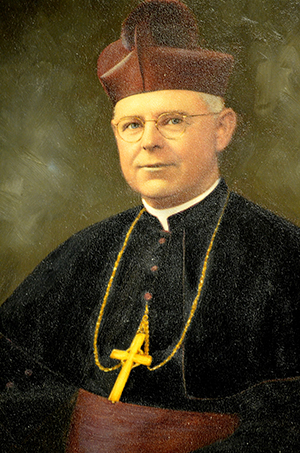
Bishop Daniel Joseph Feeney (1955–1969)
B
ishop Daniel Joseph Feeney, who had been serving as coadjutor bishop due to his predecessor’s failing health, succeeded Bishop McCarthy upon his death and was installed as the seventh Bishop of Portland on Sept. 12, 1955, his 52nd birthday. A native of Portland who had attended St. Dominic Parish as a child, Bishop Feeney was the first Mainer to become Bishop of Portland. One of Bishop Feeney’s priorities was paying off the diocese’s remaining debt, which was accomplished on Nov. 1, 1963. That debt limited new construction, but several churches were constructed during this time as were new Chancery offices in Portland. The establishment of a Diocesan Savings & Loan program helped the diocese provide its own financing for projects. Under Bishop Feeney’s leadership, the Catholic Youth Organization was established as was the Bureau of Human Relations Services, the precursor to Catholic Charities Maine. In February 1967, Coadjutor Bishop Peter Leo Gerety became apostolic administrator of the diocese due to the failing health of Bishop Feeney, who died on Sept. 15, 1969.
-
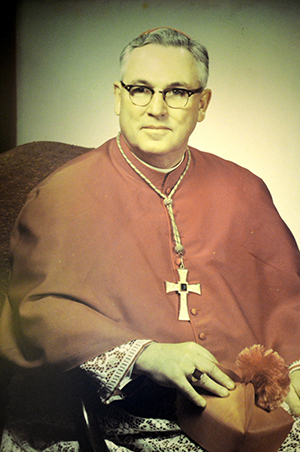
Bishop Peter Leo Gerety (1969–1974)
B
orn July 19, 1912, in Shelton, Conn., Peter Leo Gerety became the eighth Bishop of Portland on Sept. 15, 1969. Bishop Gerety had been serving as coadjutor bishop since 1966 and, with Bishop Feeney’s health failing, was named apostolic administrator with right of succession in February 1967. Prior to the priesthood, he had worked in the U.S. Department of Agriculture. He then served at parishes in the Archdiocese of Hartford, where he became known as a leader on issues concerning interracial justice. It earned him a reputation as an activist on social issues. Bishop Gerety oversaw the implementation of many of the changes that resulted from the Second Vatican Council. While he was a bishop, the first diocesan capital campaign was held to construct the Newman Center in Orono, and the diocese opened its first units of elderly housing in Portland and Waterville. While the number of parishes increased under Bishop Gerety, there was also evidence of a need to consolidate. The churches of St. Athanasius and St. John in Rumford merged in 1970, and some parish schools closed. In 1974, Bishop Gerety was appointed Archbishop of Newark. He served until retirement and, at age 101, is currently the oldest living Catholic bishop in the United States.
-
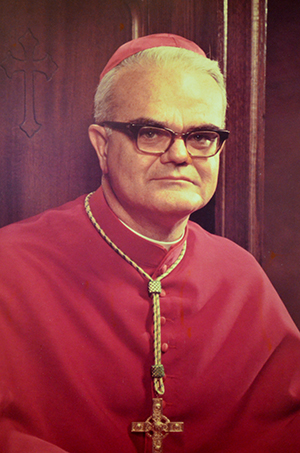
Bishop Edward Cornelius O’Leary (1974–1988)
B
orn Aug. 21, 1920, Edward Cornelius O’Leary was installed as the ninth Bishop of Portland on Dec. 18, 1974. A native of Bangor, he was ordained to the priesthood in 1946 and was named Auxiliary Bishop of Portland in 1970. While three new parishes were established during Bishop O’Leary’s episcopate, the number of priests took a dramatic dip, from 345 to 297. It led to the first planning process to manage that trend. The number of Catholic schools also continued to decline. Bishop O’Leary retired for health reasons in 1988 but continued to serve as bishop emeritus of Portland until his death on April 2, 2002
-
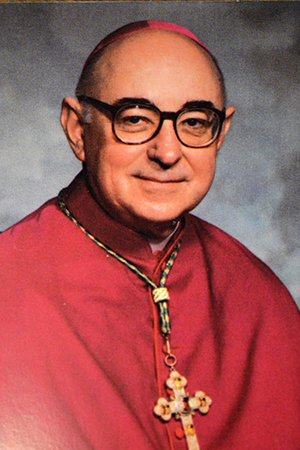
Bishop Joseph John Gerry, O.S.B. (1988–2004)
B
orn on Sept. 12, 1928, Joseph John Gerry was installed as the 10th Bishop of Portland on Feb. 21, 1989. He had previously served as Auxiliary Bishop of Manchester, N.H., for nearly three years and, prior to that, as abbot of St. Anselm Monastery. During his tenure as Bishop of Portland, Bishop Gerry published roughly one pastoral letter per year, addressing such topics as vocations and the sacrament of confirmation. Bishop Gerry made the decision to move the confirmation age to 7, so that children would be confirmed and make their first Communions at the same time. While he was bishop, the first permanent deacons were ordained, a major renovation of the Cathedral of the Immaculate Conception was completed, and a new Saint Dominic High School was built. The bishop also faced a number of challenges including the clergy sexual abuse crisis, a decline in the number of priests, and a drop in church attendance. In May 1995, Father Michael Cote, a Sanford native, was named auxiliary bishop to assist Bishop Gerry. Bishop Cote was later named Bishop of Norwich, Conn., where he still serves. On Feb. 10, 2004, Bishop Gerry retired to Saint Anselm Abbey, where he continues to reside.
-
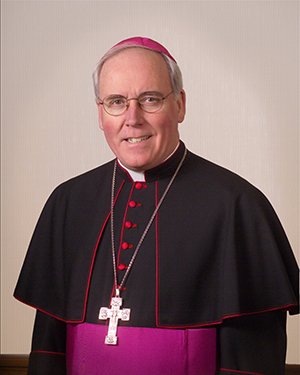
Bishop Richard Joseph Malone (2004-2013)
B
orn on March 19, 1946, in Salem, Mass., Richard Joseph Malone was installed as the 11th Bishop of Portland on March 31, 2004. The bishop holds a bachelor’s degree in philosophy, master’s degrees in divinity and theology, a doctorate in theology and a licentiate in sacred theology. Before becoming bishop, he worked extensively in the field of education. He taught at both the high school and college level and served as director of the Office of Religious Education and as secretary for education for the Archdiocese of Boston. He was appointed Auxiliary Bishop of Boston, South Region, in 2000. Bishop Malone worked to strengthen the diocese’s safe environment program in compliance with the Charter for the Protection of Children and Young People. While he was bishop, 10,000 priests, employees, and volunteers were trained under the program, which includes mandatory background checks. The bishop also served for five years as the Region 1 representative on the USCCB Committee for the Protection of Children and Young People. In 2008, the bishop was elected chairman of the USCCB’s Committee on Evangelization and Catechesis, and in 2009, he was appointed to the Board of Directors of Catholic Relief Services. On May 29, 2012, Pope Benedict XVI named Bishop Malone the 14th Bishop of Buffalo, NY. He was installed on Aug. 10, 2012.




